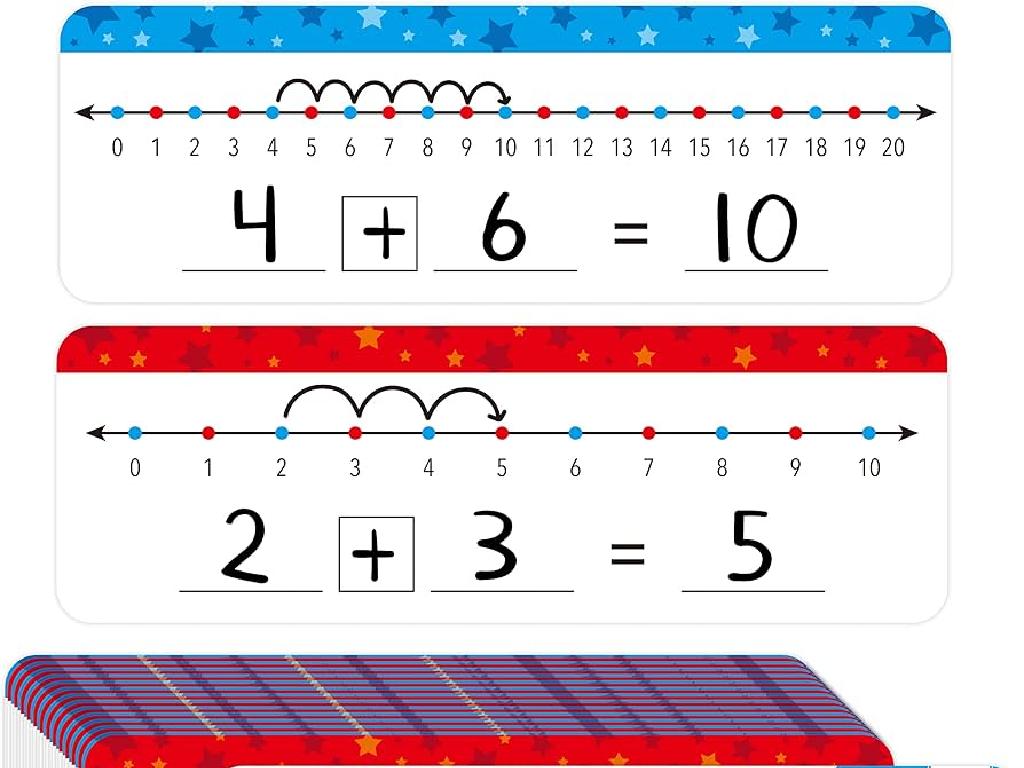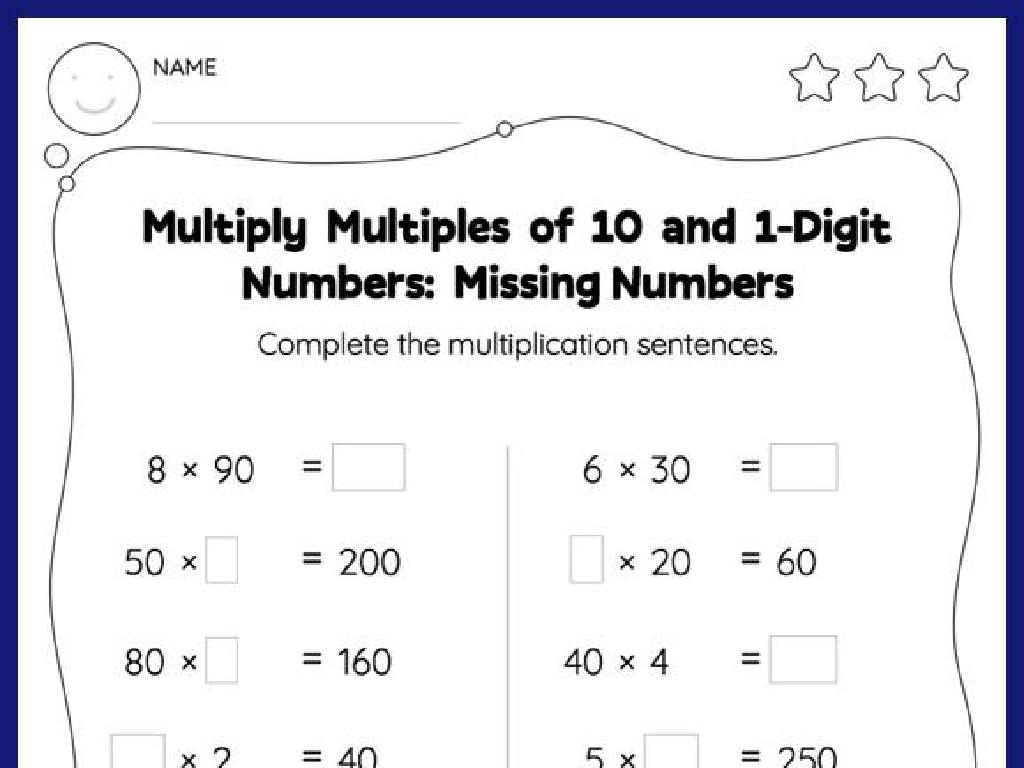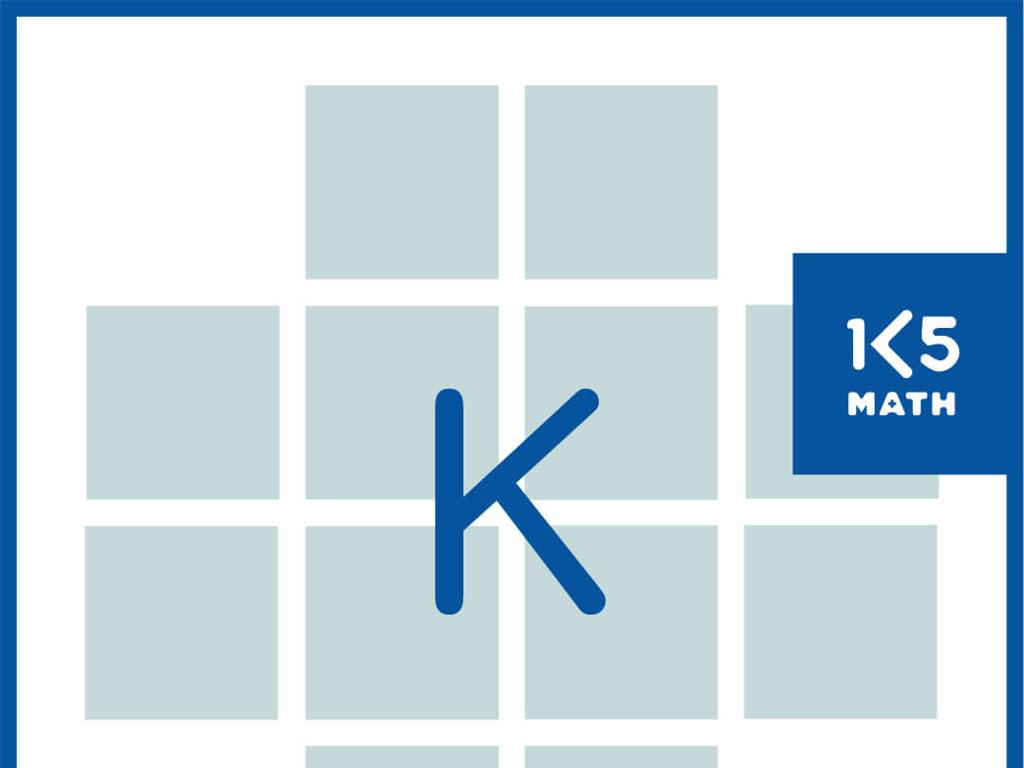Turn Words Into An Addition Sentence - Sums Up To 10
Subject: Math
Grade: First grade
Topic: Understand Addition
Please LOG IN to download the presentation. Access is available to registered users only.
View More Content
Welcome to Addition!
– Learning to add numbers
– Addition combines counts
– Like adding 2 apples + 3 apples
– Add numbers within 10
– We’ll use numbers 1 through 10
– Practice with examples
– Example: 4 birds + 5 birds = ?
|
This slide introduces first graders to the concept of addition as a means of combining two or more numbers. Start by explaining that addition is like putting things together to see how many there are in total. Use tangible examples, such as combining groups of apples or birds, to illustrate the concept. Emphasize that we will focus on numbers that add up to 10, which is a foundational skill in math. Encourage the students to think of addition as a fun activity and reassure them that with practice, they will be able to add numbers quickly and easily. Prepare to demonstrate several examples and provide hands-on activities where students can practice adding different pairs of numbers up to 10.
What is Addition?
– Addition combines numbers
– It’s finding the total, like 2 apples + 3 apples = 5 apples
– Like adding toys together
– Imagine 4 teddy bears + 1 teddy bear on your bed
– The ‘+’ sign means add
– When we see ‘+’, we put groups together
– All sums equal 10
– Examples: 5+5, 6+4, 7+3 all make 10
|
This slide introduces the concept of addition as a way to combine numbers, using the analogy of combining groups of toys to make it relatable for first graders. Emphasize the use of the plus sign (+) as the symbol for addition. Provide examples that result in sums of 10 to align with the lesson’s focus. Encourage students to think of their own examples of adding two groups of items they are familiar with, such as toys or snacks, to reinforce the concept. The goal is for students to understand addition as a method of finding the total amount and to recognize the plus sign as an indicator of this process.
Turning Words into Numbers
– Words can describe adding
– Change words to addition sentences
– Example: ‘3 apples and 2 apples’
– This phrase means 3 plus 2
– ‘3 apples and 2 apples’ is ‘3 + 2’
– We can add the numbers: 3 + 2 equals 5
|
This slide is aimed at helping first graders understand how to translate phrases that describe addition into actual addition sentences. Start by explaining that sometimes we talk about adding things using words instead of numbers. Then, show them how these phrases can be changed into addition sentences with numbers and symbols. Use the example of apples to make it relatable and easy to visualize. Encourage the students to think of other examples of things they can add together. As an activity, you can have students come up with their own word phrases and work together to turn them into addition sentences. Reinforce the concept that the sum of the numbers will always add up to 10 or less, to align with the lesson’s objective.
Let’s Practice Addition Together!
– Turning words into addition sentences
– Example: ‘4 stars and 1 star’
– The addition sentence is 4 + 1 = 5
– Creating an addition sentence together
– We’ll use objects and words to make sentences
– Practice with different examples on the board
– I’ll help you make your own addition sentences up to 10
|
This slide is designed to engage first-grade students in a group activity to practice forming addition sentences from word problems. Start by explaining that an addition sentence is a way to write out how to add things together using numbers and symbols. Show them the example ‘4 stars and 1 star’ and guide them to convert it into the addition sentence ‘4 + 1 = 5’. Then, invite students to the board to try creating their own addition sentences with your help. Use objects like blocks or drawings to visualize the concept. Encourage participation and praise their efforts to build confidence. The goal is to help students understand the concept of addition and to recognize that addition sentences are just another way of saying ‘and’.
Your Turn: Creating Addition Sentences
– Receive your worksheet with word problems
– Read each word sentence carefully
– Look for keywords that suggest addition
– Write the addition sentence for each
– Use numbers to replace the words
– All sentences should sum up to 10
– Check your work by adding the numbers
|
This slide is designed to engage first-grade students in an interactive activity where they will apply their understanding of addition to turn word sentences into addition sentences. Distribute worksheets with simple word problems and guide the students to identify keywords that suggest addition, such as ‘together,’ ‘in all,’ or ‘combined.’ Encourage them to translate the words into numbers and write the corresponding addition sentence. Remind them that the total should add up to 10. This activity will help reinforce their comprehension of addition as combining parts to make a whole. Offer assistance as needed and praise their efforts to foster a positive learning environment.
Adding with Objects: Sums Up to 10
– Use objects to learn addition
– Example: 3 blocks + 2 blocks
– If you start with 3 blocks and add 2 more, let’s count: 1, 2, 3, 4, 5!
– Counting together with objects
– We’ll use toys or drawings to add numbers together.
– Practice makes perfect!
|
This slide is aimed at helping first graders understand addition by using tangible objects like blocks. Start by explaining that objects can represent numbers and adding more objects is like adding numbers. Use the example provided to demonstrate this concept. Place 3 blocks in front of the class, then add 2 more, counting each block as you place it down. This visual and physical representation helps solidify the concept of addition. Encourage the students to practice with different objects to reach sums up to 10, ensuring they understand that the total number of objects is the sum of the two groups combined. This hands-on activity will help them grasp the basics of addition in a fun and interactive way.
Class Activity: Addition with Hands
– Use fingers to learn addition
– Show fingers for first number
– If the first number is 4, hold up 4 fingers
– Add fingers for second number
– For the second number 3, add 3 more fingers
– Find the sum up to 10
– Count all fingers to see the total is 7
|
This activity is designed to help first graders visualize addition by using their fingers. It’s a tactile and interactive way to understand the concept of adding two numbers together to make a sum. Start by explaining that each finger represents one unit. Have the students hold up the number of fingers that corresponds to the first number in an addition problem, then add the correct number of fingers for the second number. They can then count all their fingers to find the total. Make sure to walk around the classroom to assist any students who may be struggling and to confirm that each student reaches the correct sum. Possible variations of the activity could include using different combinations of numbers that add up to 10, or having students work in pairs to add numbers greater than 10.
Great Job on Addition!
– Turning words into addition sentences
– Addition means combining numbers
– Just like adding toys together!
– Practice with objects and fingers
– Use toys, candies, or fingers to add up to 10
– Keep practicing at home!
|
This slide is a conclusion to reinforce the lesson on creating addition sentences from word problems. Emphasize to the students that addition is simply the process of combining numbers to make a new total. Encourage them to continue practicing with tangible objects like toys or candies, and using their fingers to help them visualize the concept of addition. Remind them that practice is essential and that they should try to incorporate these exercises at home to become more confident in their addition skills. Celebrate their progress in learning to turn words into addition sentences and encourage a positive attitude towards continued practice.
Class Activity: Addition Scavenger Hunt
– Let’s go on an Addition Scavenger Hunt!
– Find classroom items for addition sentences
– Look for pencils, blocks, or books to add
– Pair up and write sums that equal up to 10
– For example, 4 crayons + 6 erasers = 10
– Share your addition sentences with the class
|
This interactive activity is designed to help first graders practice addition in a fun and engaging way. Teachers should prepare the classroom with various countable items. Students will work in pairs to find different combinations of items that add up to 10. They should write down each addition sentence they create. After the scavenger hunt, each pair will have the opportunity to share their findings with the class, reinforcing their understanding of addition. Possible variations of the activity could include using different sums, finding items that represent specific numbers, or drawing pictures of the items they added together.






